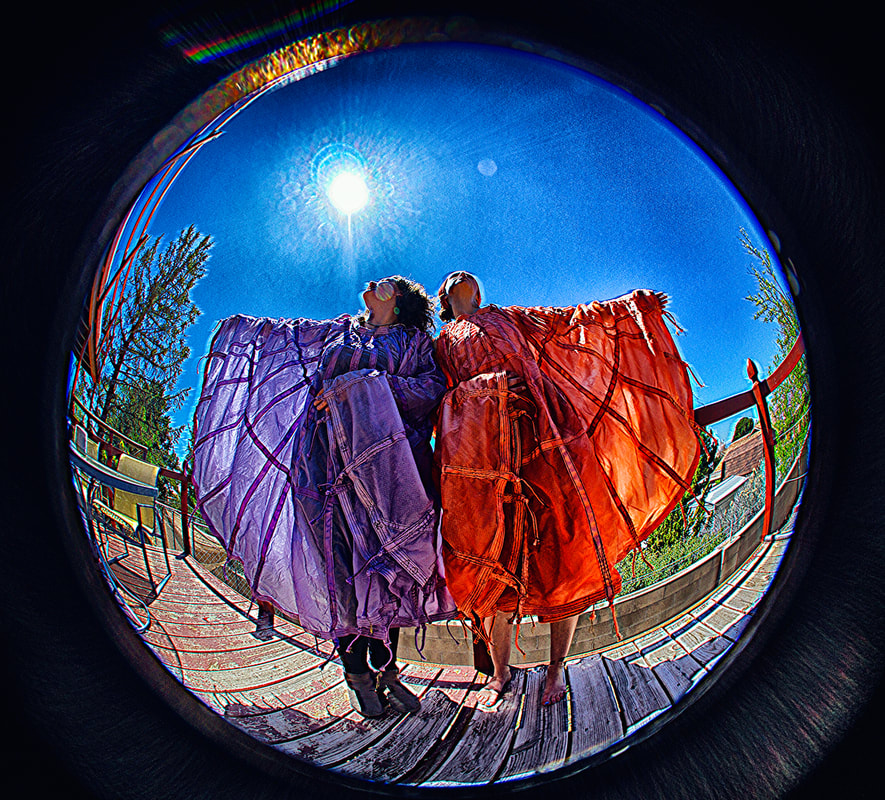Fisheye Lens Portraits
There is a fellow (grEGORy) who writes and photographs. His website is www.ultrasomething.com/ and in one of his posts he was talking about the Widelux panoramic camera.
Egor (I refer to him as Egor but he uses grEGORy) is a terrific writer and often offers a unique perspective on photography.
In this Widelux article he talked about the wide-angle lens being a “Contextual” lens.
“It discussed how I work with wide-angle lenses and why I prefer to call them ‘contextual; lenses,” grEGORy wrote (he uses unique lettering for his name). “With their extensive depth of field and wide angle of view, they enable me to frame my subject within the context of its environment, rather than isolating the subject from it.”
Egor and I share a fascination with wide angle lenses and panoramic images, and his use of the word “contextual” resonated since it is a term I have been using for years to describe my wide-angle work.
I’ve used ultra wide-angle lenses, panoramic cameras such as the Widelux and the Russian-built Horizont. I have used the panoramic feature on some of my digital cameras, a Lomography Spinner 360 and I also have used a number of fisheye lenses; my favorite being the Sunex 185 degree circular fisheye.
Similar to composition with the Widelux camera, I try to fill the image completely but, at the same time, avoid putting extraneous things into the frame, which with a lens that covers 185 degrees, is sometimes a challenge.
The circular fisheye lens is something of an acquired taste and perhaps even more than a lot of lenses lends itself to particular subjects, so it's not an everyday lens for a lot of folks.
One of the tricks I've learned is to include something that acts somewhat like a frame that surrounds the subject, such as the plant arbor around the two boys in the backyard swing or the overhead shade structure around the portrait of the four cousins.
I also try to keep the subject of the portrait centrally located as the edges add a lot of distortion and the central portion of the circular fisheye is relatively distortion free.
I recently started compiling a series of portraits using the Sunix and the main reason I’ve done this is to include as much of the surrounding area, or environment, as I can in the portraits.
Egor (I refer to him as Egor but he uses grEGORy) is a terrific writer and often offers a unique perspective on photography.
In this Widelux article he talked about the wide-angle lens being a “Contextual” lens.
“It discussed how I work with wide-angle lenses and why I prefer to call them ‘contextual; lenses,” grEGORy wrote (he uses unique lettering for his name). “With their extensive depth of field and wide angle of view, they enable me to frame my subject within the context of its environment, rather than isolating the subject from it.”
Egor and I share a fascination with wide angle lenses and panoramic images, and his use of the word “contextual” resonated since it is a term I have been using for years to describe my wide-angle work.
I’ve used ultra wide-angle lenses, panoramic cameras such as the Widelux and the Russian-built Horizont. I have used the panoramic feature on some of my digital cameras, a Lomography Spinner 360 and I also have used a number of fisheye lenses; my favorite being the Sunex 185 degree circular fisheye.
Similar to composition with the Widelux camera, I try to fill the image completely but, at the same time, avoid putting extraneous things into the frame, which with a lens that covers 185 degrees, is sometimes a challenge.
The circular fisheye lens is something of an acquired taste and perhaps even more than a lot of lenses lends itself to particular subjects, so it's not an everyday lens for a lot of folks.
One of the tricks I've learned is to include something that acts somewhat like a frame that surrounds the subject, such as the plant arbor around the two boys in the backyard swing or the overhead shade structure around the portrait of the four cousins.
I also try to keep the subject of the portrait centrally located as the edges add a lot of distortion and the central portion of the circular fisheye is relatively distortion free.
I recently started compiling a series of portraits using the Sunix and the main reason I’ve done this is to include as much of the surrounding area, or environment, as I can in the portraits.
To contact Bob Eckert for assignments, consultations or workshops, please email [email protected]
or use the contact form on the About page
or use the contact form on the About page











